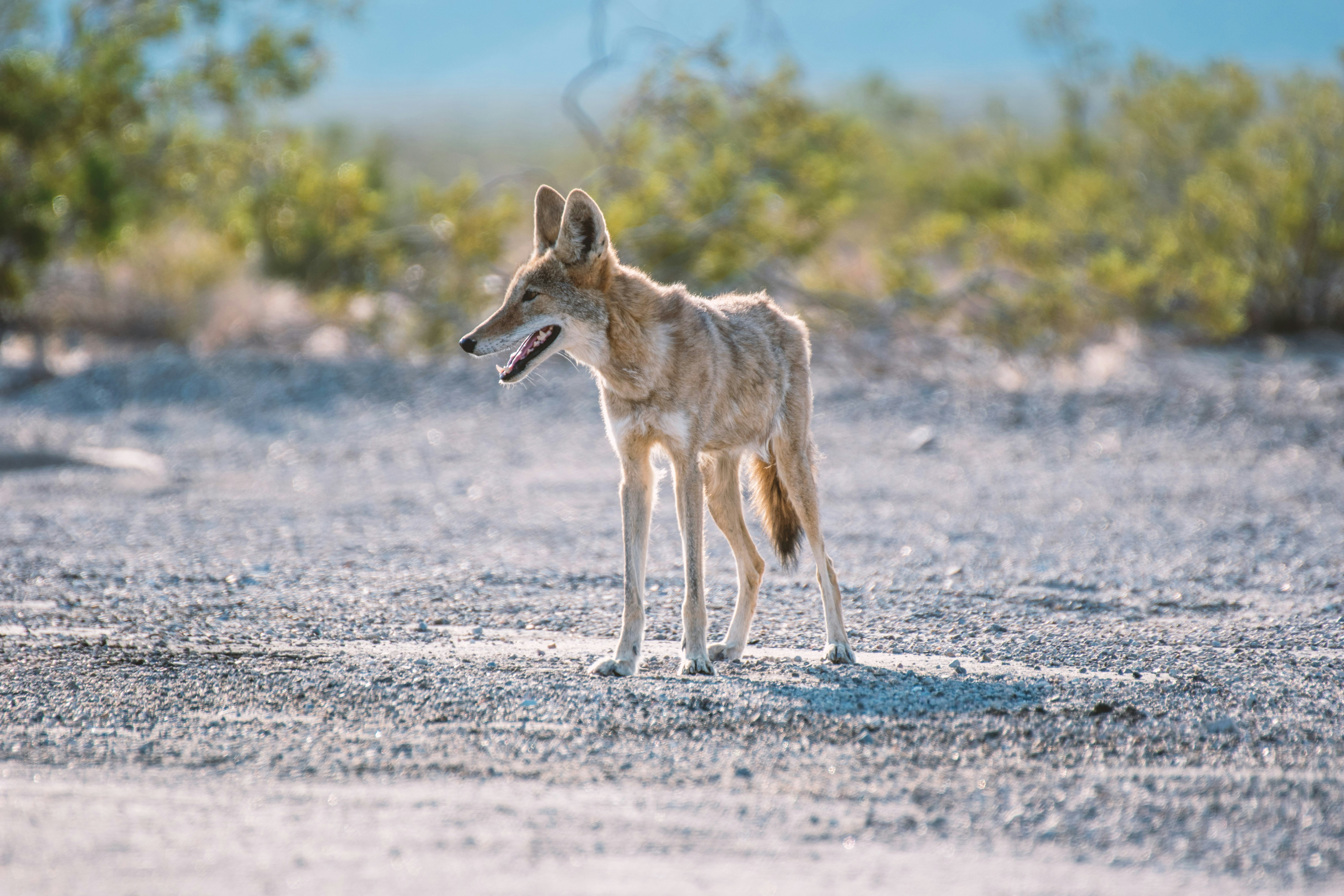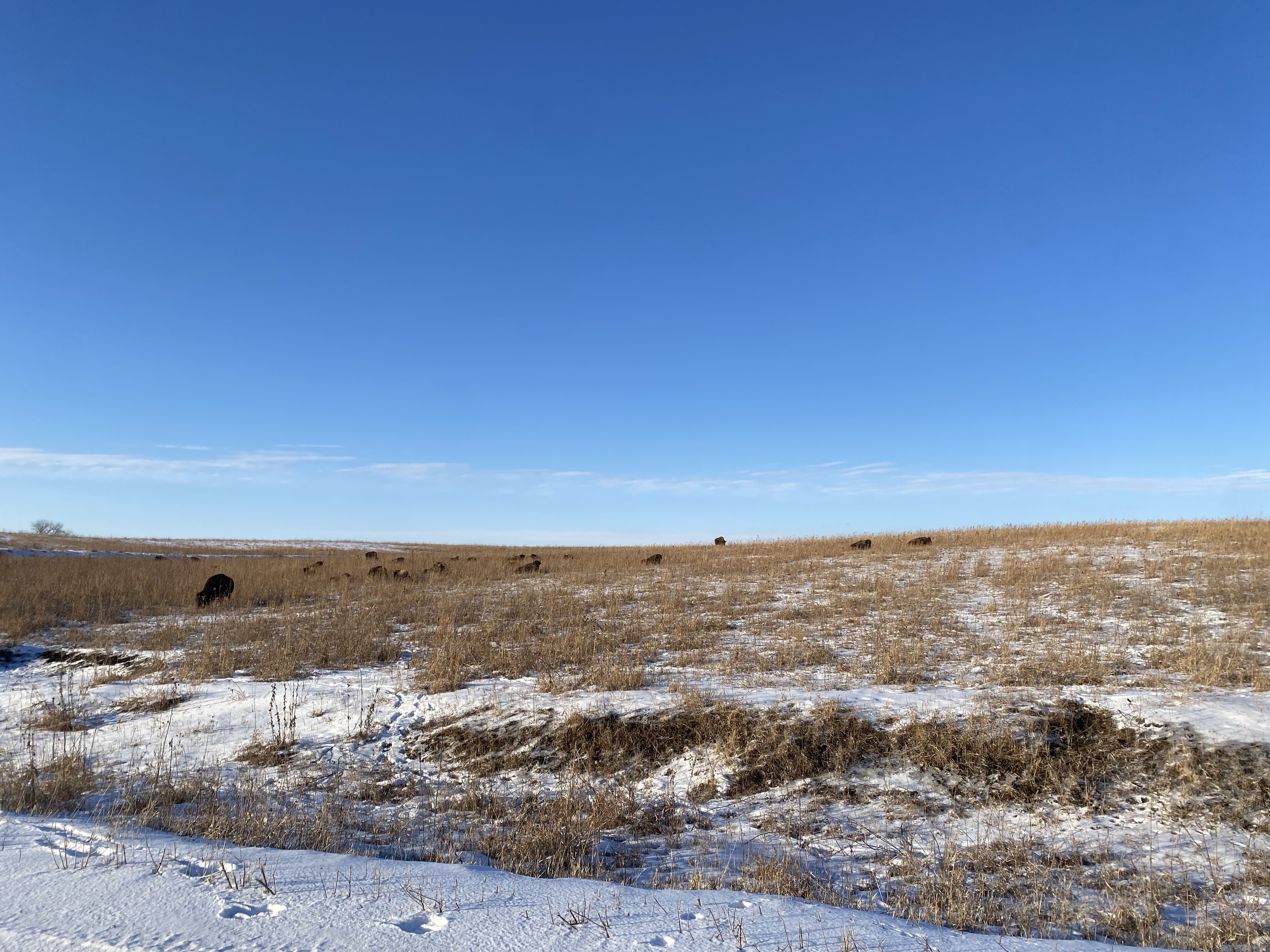Amidst urbanization and climate change, coyotes’ resilience highlights broader implications for human and ecological displacement.
If you scour the official website of the New York City Department of Parks and Recreation, you will eventually come across the page sharing, “Five Easy Tips for Coexisting with Coyotes.”
At the top of the page, a thousand miles from his preferred plains, a coyote glances somberly towards a camera.
NYC’s eight million residents are advised not to feed coyotes, not to leave food and garbage outdoors, to keep their pets on a leash, to make themselves as large and as loud as possible when they encounter coyotes, and to maintain a more than respectful distance from the animals who now wander the streets of the Bronx in neutral tones alongside the human locals.
Ecologists are divided between two possible explanations for this phenomenon, both hypotheses of annexation:
One. Coyotes are native to the woodlands of the Northeast, preceding European settlers and lingering after burnished skyscrapers replaced green ash trees, or
Two. Coyotes are recent arrivals to New York — nomads who expanded their range from Central North America as the ecosystems of the Great Plains were transformed by agriculture. Industry fell upon the land, carving up swaths of tallgrass and savanna, and coyotes sought a new home.

Photo by Joshua Wilking on Unsplash
Not everyone escaped the disappearing prairie. Before 1800, bison mowed the North American plains in the millions, grazing highways through the tallgrass, gifting manure and aerating the soil in exchange. Then, European settlers overhunted them to near-extinction. The optimal quantity of bison per square meter — to ensure biodiversity of the prairie — is 12.5 grams, a college professor once told me.
I must take his word for it. Then, I was a transplant to the Great Plains, seventeen years old, lost beneath the sprawling sky and a landscape utterly void of bison. The Iowa of optimal biodiversity had disappeared long before I arrived. In a course entitled “Prairie Restoration,” Jackie Brown showed us old paintings of tallgrass prairies. “Look at the lighting,” he urged. “The dark horizon and the sunlit surveyor. Do you see how settlers saw this land as a wilderness to tame?”
With bison as an example, Brown taught the Intermediate Disturbance Hypothesis, which states that a middling amount of damage is beneficial to an ecosystem. Bison wallow in the tallgrass, tearing the earth, and soothing their skin, and a buried rhizome sends out shoots in the clearing that is left behind.
“That which does not kill us, makes us stronger,” taught the German philosopher Friedrich Nietzsche. This is the foundation of the hypothesis; small disturbances to the ecosystem create a mosaic-ed landscape, creating more potential niches, which in turn beget more diversity.
Too much disturbance, however, and the tangle of life begins to disintegrate.
The buffalo and the prairie-plains were synonymous, writes Lance Michael Foster, a member of the Ioway tribe, and one cannot truly and deeply exist without the other.

Photo by Anika Jane Beamer.
The Ioway were bought out by the voraciously expanding government. Treaties pushed them into Kansas, settlers slaughtered the bison and plowed the grasslands. Nothing is where it ought to be.
Staying in place is an endangered luxury.
The average United States resident can expect to move 11.7 times in their lifetime. I was four years old when my family moved two blocks for a third bathroom and a larger backyard. Two hundred and eighty-two million people now live outside their country of origin. Immigrants comprise 14.4 percent of the U.S. population. We are, none of us, as rooted as we think we are. How many among us have migrated, and how far?
“Wildfire chars suburbs at the base of Rockies,” reads the headline. At least 991 homes and buildings destroyed. First amidst pavement, then amidst fire, the coyotes have survived.
Loss pulses in the animal’s throat. Smoked out; the eyes sting and the inner ear screams. They will move. They will find a home yet again.
Experts estimate that 40 to 70 coyotes have become permanent residents of the City of San Francisco. “As droughts and fires get worse, they will have no choice but to move into human settlements,” said Christopher Schell, a U.C. Berkeley professor studying urban coyotes. Our cities contain riches such as water and waste and small, socialized pets.
“A nation that cannot control its borders is not a nation,” bumper stickers read, quoting Reagan, advocate of strict migration policy. But what about a city that cannot control its borders? Where humans are not the only residents, what good are zones and districts? At what point in our ceaseless butting up against the edge of nature do we become those who have transgressed, those who have crossed over, those who threaten?
Coyotes are rugged. They can make do in most environments, having evolved pliant digestive systems. The neighbor’s dog is frail – in their eyes: a coquettish squirrel of a shadow. Just an FYI, the neighbor texts us, we saw a coyote in the yard again.
Growing up, our family had an unspoken rule regarding rabbits. They had to be publicly acknowledged. After Sunday School the car would slow, halfway up the alley-turned-driveway. Bunny! Mom would exclaim.
When I go home to Michigan these days, I see fewer rabbits. Our neighbor has stopped letting her dog outside unsupervised.
In stories told by the Ioway people, Manyikathi — Coyote — is a wily trickster. He is cunning and manipulative, entering and exiting scenes as the punchline of moral retribution. In one story, the overconfident Manyikathi ate a plant he was expressly told to avoid, grew sick, and fell into copious amounts of his own dung. Blinded by the filth, he found his way to the river to rinse off by asking the trees for their names as he passed them. Knowing the trees of the savannah, the marsh, the bank … Coyote guided himself to the water.
“The coyote is a living, breathing allegory of Want,” Mark Twain wrote. “He is always hungry. He is always poor, out of luck, and friendless.” The coyote’s bad reputation stems from his adaptability, it seems: he will eat what he can, where he can, welcome or not.
At some point, we decided that the coyote is wily rather than resourceful. A cheat, not resilient. According to the bold text across the home page of Project Coyote, “The coyote is the flagship species for all misunderstood and exploited carnivores.” The coyote wanders, forages, and makes do — with no regard for our desire to see him disappear.
Despite man’s best efforts, it is nearly impossible to permanently reduce coyote populations. When one habitat is destroyed, they simply adapt or move. In 2019, USDA Wildlife Services reported more than 62,000 coyotes killed and 251 dens destroyed. These mass killings of coyotes, attempted since the 1850’s, end up stimulating population growth, disrupting social structure and encouraging more breeding.
Coyotes defy the Intermediate Disturbance Hypothesis, seeming to benefit from what should be catastrophic levels of disturbance. Their resilience has not met its limit. Unlike bison and tallgrass, coyotes are tied to little.
Regions of Central America have been in drought since 2014. As oil rigs bore holes into the ocean and the atmosphere, the storm and parch cycle of El Nino is becoming more frequent and less predictable. In semiarid regions of Guatemala, rainfall will decrease by 60 percent in the next few years. Available water in streams and soil will decrease by 83 percent. In fifty years, food yields in the area will drop by at least 30 percent. Crops refuse to make any more sacrifices, to continue to photosynthesize with less and less. Contrary to us unrooted bipeds and quadrupeds, individual plants cannot pick up and move north.
In the African Sahel, the ecotone between the northern desert and the southern savanna, drought and crop failures have impelled millions of rural people to the coasts and cities.
What about the coyotes? What will be deemed unlivable for them? They’ve known exile before.
Humans are playing tag with the mercury in the thermostat. We are herding it. It is herding us. We are driven out of homes and pressed through borders by the expansion of warming air. “The Great Climate Migration Has Begun,” reads the New York Times article my mother mails to me.
If carbon emissions continue unabated, more than three million climate migrants may move from Central America and Mexico to the United States. Our cities and suburbs will inflate. Forests will dwindle. More and more animals will face extinction. The coyote, perhaps, will not.
When drought withers the soil beneath our feet, do we resent the coyote for his ability to be ok?
The coyotes will be fine.
The coyotes will be fine. How dare they?
By 2070, up to 19 percent of the world may be an unlivable hot zone. One in every three people alive will find themselves outside the climate niche in which we’ve evolved for thousands of years. No human community will be able to survive in these regions. The parched and the mirage-seeing will have no choice but to move. How will it feel, leaving behind burning land?
Ask the bison — massacred, fenced, watching as their floral and faunal neighbors disappeared from a razed horizon. There are few options for creatures in an inhospitable environment: migration, species adaptation, or extinction.
Last week, ABC Eyewitness 7 New York published a four-sentence article about a coyote spotted in Central Park. “Coyotes have been reported to live in New York City for the last 30 years,” sentence three reads, “but only one is known to live in Central Park.” Who is keeping track? Does the Central Park coyote have a name? I would like to know. Are you not unsettled by the anonymity of the displaced?
When I finally see him face to face, the coyote is smaller than I’ve always imagined the animal would be. He crosses the street, no larger than a spaniel. He is pitiable, not because he appears ragged – he does not – but because he seems unaware of the absurdity of his presence. Strife is not matted into his fur. His ribs do not protrude. He looks, oddly, at home.
The coyote is persecuted and bulldozed across the continent and yet here he is, pissing on my mother’s tulips. He does not seem to grasp the precariousness of his being here.

